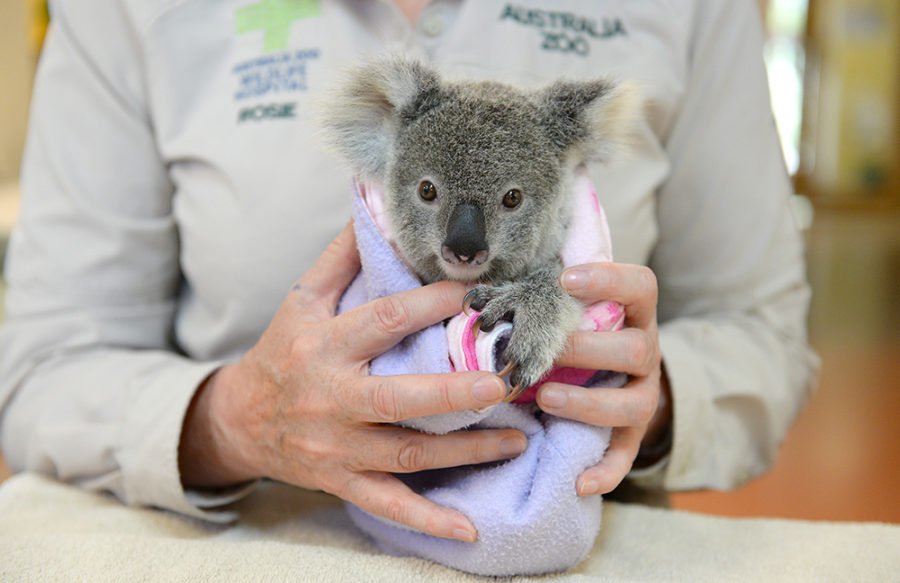Wildlife hospital prepares for ‘peak trauma season’

THIS IS SHAYNE, a nine-month-old koala joey orphaned when his mum was hit by a car in a 70km/h speed zone. Shane was thrown off his mum’s back and found about 20m away, being chased by crows.
He’s one of the many expected casualties of this year’s ‘trauma season’ from August to February, when the Australia Zoo Wildlife Hospital – Australia’s largest koala treatment facility – receives about 70-80 koalas every month and has over 100 in care at any one time.
RELATED: What to do if you find a joey
The warmer months mean animals are moving around more, looking for a mate or dispersing from their mother’s territory, leaving them vulnerable in particular to car strike or domestic animal attacks.

Clinging to a plush toy in the absence of his mum, Shayne the koala joey is just one of the many innocent victims of this year’s Trauma Season. (Image: Ben Beaden/Australia Zoo)
The Australia Zoo Wildlife Hospital urges motorists to take additional care in wildlife populated areas over the coming months and to heed signs, and also keep pets secure at night.
As for Shayne, he’s currently receiving around-the-clock attention from a wildlife carer until he reaches weaning age and height, after which he will return to the Australia Zoo Wildlife Hospital to learn essential climbing and social skills before being released into the wild.
“Shayne has no injuries as a result of the accident, instead, he’s dealing with the loss of his mum and the vital life lessons he needs to learn in order to become an independent, wild koala,” said Dr Rosie Booth, Australia Wildlife Hospital Director.
“It’s very fortunate that we had an observant rescuer who found Shayne and brought him into us because he wouldn’t have lasted even a day in the wild by himself at his young age – now he gets a second chance at life,” she added.
Watch and learn more in the below video with Rosie, supplied by Australia Zoo Wildlife Hospital:

